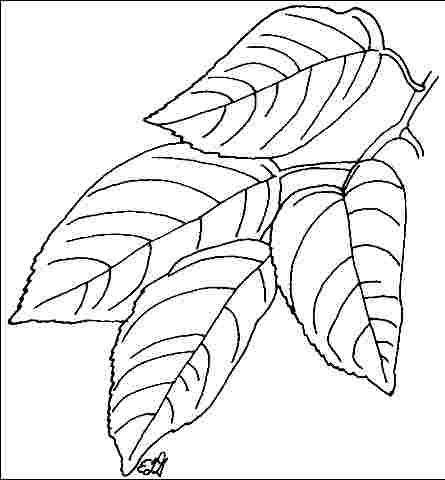Introduction
The deciduous Callaway Crabapple tree reaches 15 to 25 feet in height and forms a rounded canopy. This Crabapple is often recommended for use in southern gardens due to its high disease-resistance and its low chilling requirement for flower production. The beautiful, single flowers start out as soft, pink buds then open in early April into 1 to 1.5-inch-diameter white blossoms. The small but highly ornamental, persistent fruits which follow are deep red and held on the tree until devoured by birds and other wildlife. They can also be eaten or canned. Fruits create a litter problem on walks and patios beneath the canopy.

Credit: Ed Gilman
General Information
Scientific name: Malus x
Pronunciation: MAY-lus
Common name(s): 'Callaway' Crabapple
Family: Rosaceae
USDA hardiness zones: 4A through 8A (Fig. 2)
Origin: not native to North America
Invasive potential: little invasive potential
Uses: espalier; specimen; highway median
Availability: somewhat available, may have to go out of the region to find the tree

Description
Height: 15 to 25 feet
Spread: 15 to 25 feet
Crown uniformity: symmetrical
Crown shape: round
Crown density: dense
Growth rate: moderate
Texture: medium
Foliage
Leaf arrangement: alternate (Fig. 3)
Leaf type: simple
Leaf margin: serrate, serrulate
Leaf shape: elliptic (oval), ovate
Leaf venation: pinnate, brachidodrome
Leaf type and persistence: deciduous
Leaf blade length: 2 to 4 inches
Leaf color: green
Fall color: yellow
Fall characteristic: not showy

Flower
Flower color: white/cream/gray
Flower characteristics: very showy
Fruit
Fruit shape: round
Fruit length: .5 to 1 inch
Fruit covering: fleshy
Fruit color: red, orange
Fruit characteristics: attracts birds; showy; fruit/leaves a litter problem
Trunk and Branches
Trunk/bark/branches: branches droop; not showy; typically multi-trunked; thorns
Pruning requirement: little required
Breakage: resistant
Current year twig color: brown
Current year twig thickness: thin, medium
Wood specific gravity: unknown
Culture
Light requirement: full sun
Soil tolerances: clay; sand; loam; acidic; alkaline; well-drained
Drought tolerance: moderate
Aerosol salt tolerance: low
Other
Roots: not a problem
Winter interest: yes
Outstanding tree: yes
Ozone sensitivity: unknown
Verticillium wilt susceptibility: resistant
Pest resistance: resistant to pests/diseases
Use and Management
`Callaway' Crabapple requires some pruning which should be completed before the end of spring, to ensure flower buds are not removed for next year's display. Trees normally branch low but train to develop a central trunk if planting along a street or other area where pedestrian or vehicle clearance is required. The large fruit is considered too soft and messy for planting along sidewalks.
Some low branches will probably need removing as the tree grows to allow for clearance. Crabapples need occasional thinning to eliminate water sprouts or crossed-branches, and to thin the crown. This allows for better air circulation through the crown and helps reduce disease, although `Callaway' may be one of the most disease-resistant of the Crabapples for the South.
Grows in moist, well-drained, acid soil in full sun locations for best flowering and disease resistance. Crabapples grow well in the Texas panhandle but are not extremely drought tolerant and are not well suited for high pH soil.
Contact the Ornamental Crabapple Society, Morton Arboretum, Lisle, Illinois 60532 for more information on Crabapples.
Pests
Aphids infest branch tips and suck plant juices.
Fall webworms will make nests on the branches and feed inside the nest. Small nests can be pruned out or sprayed with Bacillus thuringiensis .
Scales of various types are usually controlled with horticultural oil applied in spring.
Mites are too small to see easily so can cause much foliage discoloration before being detected.
Tent caterpillar builds tents or nests in trees in early summer or late spring. Feeding occurs outside the nest. Small nests are pruned out or simply pulled from the tree and the caterpillars crushed. Do not burn nests while they are still in the tree since this will injure the tree and could start an uncontrolled fire.
Diseases
`Callaway' Crabapple is only slightly susceptible to mildew and fireblight, and moderately susceptible to rust. Probably one of if not the most disease-resistant Crabapple for the southern U.S.
Powdery mildew is a fungus which coats leaves with mycelia resembling white powder.
Rust causes brown to rusty-orange spots on the leaves. Badly spotted leaves fall prematurely. Redcedars are the alternate host.
Crabapples are subject to several canker diseases. Prune out infected branches, avoid unnecessary wounding, and keep trees healthy.